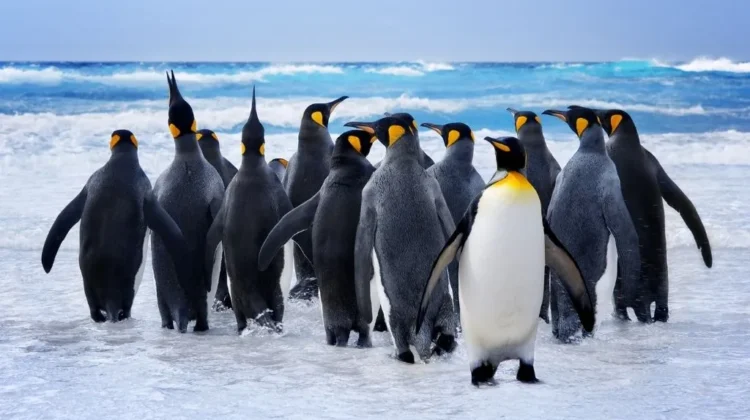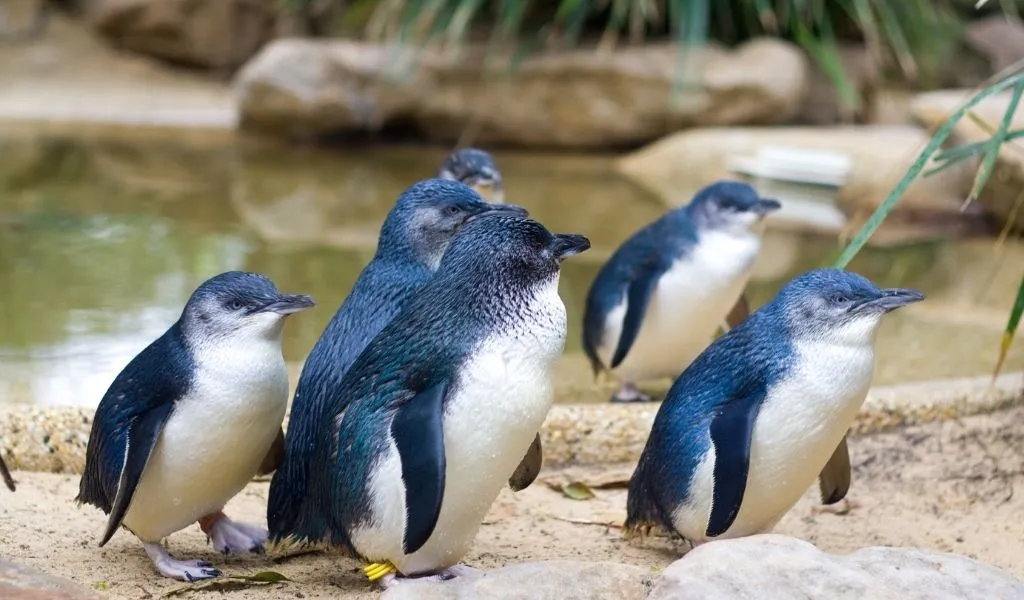
Penguins are undoubtedly one of the most iconic and recognizable animals on the planet, thanks in part to their distinctive black and white tuxedo-like appearance. But have you ever wondered why these birds are the colors they are, or why some species have colorful ‘accessories’ such as yellow crests, pink feet, and orange beak spots? In this article, we’ll explore the fascinating reasons behind penguin colors.
Why Are Penguins Black and White?
Penguins are white on their ventral (belly) and black on their dorsal (back), a coloration pattern known as countershading. This provides better camouflage for them in water as when seen from below, their white ventral blends with the lighter surface waters above, and when seen from above, the black dorsal provides camouflage against the darkness of deeper waters below.
Although black coloration makes them more visible on land, this is a reasonable sacrifice since they spend most of their time in water and most, if not all, of a penguin’s predators are aquatic. The white and black feathers also help penguins regulate their body temperature while on land. When they are cold, they turn their backs towards the sun as black is better at absorbing heat, and when they are warm, they turn their bellies towards the sun as this reflects the heat.
Why Are Some Penguins Blue?

Not all penguins are black and white; Little Penguins (also known as Fairy Penguins or Little Blue Penguins) appear to have blue or dark gray feathers on their backs. The blue color is produced by tiny bundles of nanofibers in their feathers that refract blue light and absorb other colors. Like other penguin species, Little Penguins also use countershading with a white belly and darker-colored back to blend in when they are in the ocean.
What Color Are Penguin Feet?
The color of a penguin’s feet varies by species, with some having lighter colored pink or orange feet and others having darker black feet. Some research suggests different colored feet are adaptations to regulate penguin body temperature and help swimming in water at different temperatures. For example, Chinstrap, Gentoo, and Rockhopper Penguins have pink or orange/red feet with black soles, whereas King and Emperor Penguins have black feet.
What Color Are Penguin Eyes?
The eye color of penguins varies by species and age. As chicks, penguins have a dark iris that becomes paler as they age before eventually turning more red or brown into adulthood. Did you know penguins cannot see red? Some species continue to have pale iris colors throughout their life, such as the Little Penguin or Yellow-Eyed Penguins. Adelie, King, and Emperor Penguins have the darkest iris color as adults.
It is thought that the color of the iris is related to the latitude at which the penguins are found. A darker color will absorb more radiant energy and is more likely to be found among southerly penguins where the temperatures are colder. According to these theories, this is why Adelie, King, and Emperor Penguins have the darkest eyes because they live in or near Antarctica. Whereas Humboldt and Galapagos Penguins have lighter colors.
What Color Are Penguin Beaks?

Penguins have black beaks that match their black backs, but many species have yellow or orange-colored spots on their beak, while King and Emperor Penguins also have UV patches that are not visible to the human eye but can be seen by other penguins. Both colored and UV patches on a penguin’s beak play a role in attracting a mate by both males and females.

Why Are Penguin Eggs Colored?
Penguin eggs are not black and white like their parents. Instead, they are generally white or cream with some variations in color. The color of a penguin egg depends on the species and can range from pale blue or green to brownish-yellow or even reddish-brown.
The color of the eggshell may play a role in regulating the temperature of the egg, protecting the developing embryo from UV radiation, and helping to camouflage the egg from predators.
For example, the Gentoo Penguin’s eggs have a pale blue-green color which could help regulate the temperature of the egg by reflecting some of the sunlight and heat. The eggs of Emperor Penguins are a pale yellowish color which could help to camouflage them against the snow and ice of their Antarctic environment.
Conclusion
Penguins are some of the most fascinating and beloved creatures on the planet, known for their unique tuxedo-like appearance and colorful features. Their black and white feathers provide them with excellent camouflage in the water and help to regulate their body temperature on land. Some species, like the Little Penguin, have additional blue feathers that help to attract potential mates.
Penguins come in a variety of sizes and shapes, with different colored feet, eyes, and beaks that also serve important functions. Their eggs are also uniquely colored, with shades that help regulate temperature and camouflage them from predators.
By understanding the colors of penguins and their unique features, we can better appreciate and protect these amazing birds and their habitats.

Leave a Reply